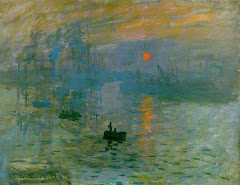Bibliographic reference:
HARDEBERG John Yngve, CRETTEZ Jean-Pierre. Computer Aided Colorimetric Analysis of Fine Art Paintings
Available at: http://www.tsi.enst.fr/publications/Hardeberg/oslo98a.pdf
Extract:
3 Colorimetric analysis
Disposing of a colour-calibrated digital image representing the painting, we project every pixel of the image to its corresponding position in the 3-dimensional CIELAB space, thus obtaining a cloud of points representing all the colours used in the painting, the colour distribution. We perform a segmentation of the CIELAB space into different regions, such as light and dark colours, pastels and saturated colours etc. This segmentation in CIELAB space also provides a segmentation of the painting itself. We can then perform a colorimetric analysis of the resulting regions separately, and extract several properties, such as the precision of the nuances, colour harmonies, principal colours etc. We can also perform statistical analyses of the colour distributions.
Title: Computer Aided Colorimetric Analysis of Fine Art Paintings
Creator: HARDEBERG John Yngve, CRETTEZ Jean-Pierre
Subject: image acquistion/ colorimetric analysis/ fine arts paintings/ qualitative analysis
Description: Presents a study about colometric analysis assisted by computer. Start with how acquiere images especially images’ colors and finish by an explanation of the colometric analysis.
Publisher: Ecole Nationale Supérieure des Télécommunications
Date: None
Type: Text
Format: Pdf
Identifier: http://www.tsi.enst.fr/publications/Hardeberg/oslo98a.pdf
Source: http://www.tsi.enst.fr/
Language: En
Relation: -
Coverage: International
Rights: Ecole Nationale Supérieure des Télécommunications



